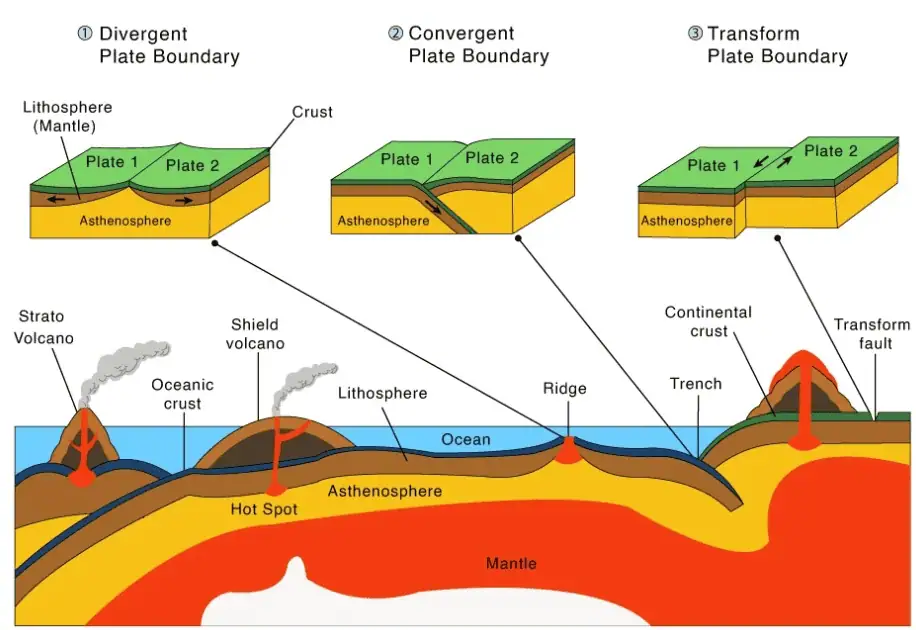Plate tectonic theory revolutionised the field of Geomorphological Evolution by providing a comprehensive framework to understand the dynamic nature of our planet’s surface. In this article, we delve into the intriguing world of plate tectonics, exploring how the movement and interaction of Earth’s lithospheric plates shape landforms, influence volcanic activity, trigger earthquakes, and contribute to the evolution of our planet. Join us on this journey as we unravel the secrets behind this groundbreaking theory and its profound implications for the study of geomorphology.

1. The Basics of Plate Tectonics
Plate tectonics is the scientific theory that describes the movement and interaction of rigid plates that comprise the Earth’s lithosphere. These plates float on the semi-fluid asthenosphere beneath them, constantly shifting and colliding due to the underlying convective currents in the Earth’s mantle. The lithospheric plates are divided into several major and minor plates, with their boundaries classified as convergent, divergent, or transform.
2. Convergent Boundaries and Landform Creation
At convergent plate boundaries, two plates collide, leading to significant geomorphological phenomena. When an oceanic plate collides with a continental plate, the denser oceanic plate subducts beneath the continental plate, forming deep ocean trenches, volcanic arcs, and mountain ranges. This process, known as subduction, results in the creation of diverse landforms like the Andes Mountains and the Pacific Ring of Fire.
3. Divergent Boundaries and the Birth of New Land
Divergent boundaries occur when plates move away from each other, creating gaps where new crust is generated. Along these boundaries, magma rises from the mantle, solidifies, and forms a new oceanic crust. The continuous divergence leads to the formation of mid-oceanic ridges, such as the Mid-Atlantic Ridge, which stretches across the Atlantic Ocean. These underwater mountain ranges play a
crucial role in shaping the ocean basins and influencing the distribution of marine life.
4. Transform Boundaries and Earthquakes
Transform boundaries are characterised by plates sliding past each other horizontally. The friction and stress along these boundaries can cause intense seismic activity, resulting in frequent earthquakes. The San Andreas Fault in California, USA, is a well-known example of a transform boundary, showcasing the immense power and destructive potential of such plate interactions.
Plate tectonic theory is the cornerstone of modern geomorphology, offering profound insights into the dynamic nature of our planet’s surface. By understanding the movement and interactions of Earth’s lithospheric plates at convergent, divergent, and transform boundaries, scientists can decipher the creation of landforms, volcanic activity, and seismic events. This knowledge enhances our ability to predict and mitigate the impacts of natural disasters, fosters a deeper appreciation for the Earth’s interconnected systems, and inspires further exploration and research in the field of geomorphology. As we continue to unravel the mysteries of plate tectonics, we gain a greater understanding of the ever-evolving nature of our planet and the fascinating processes that shape our environment.